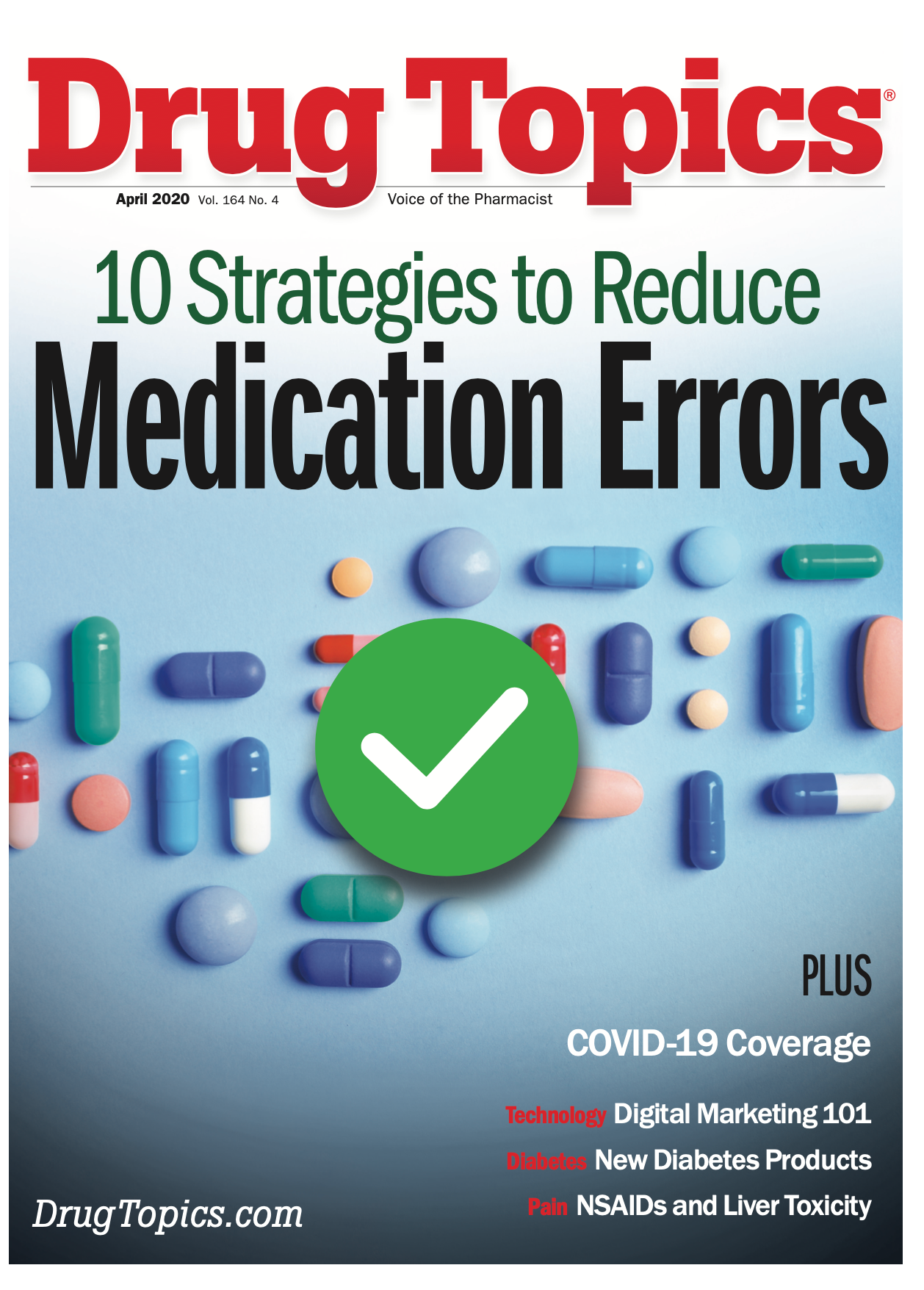How to Attract Millennial Customers
Pharmacists weigh in on how to bring this generation to the pharmacy.

Millennials are often classified as being born between 1981 and 1996, which means the older end of the cohort are nearing 40 years old and are more likely to be regular visitors to a pharmacy. But even those on the younger end of the generational range still have plenty of reasons for coming in, which is why pharmacists should find ways to attract millennials of all ages to their locations.
Aaron Gilbert, PharmD, a pharmacist in Louisville, Kentucky, said millennials live “in the now,” so you have to sell to them “in the now.” Gilbert said, “These customers have 1 primary shopping platform: their cell phone. The era of waiting in lines and dealing with [salespeople] is over. It’s archaic, and to most millennials, undesirable. In almost every industry you can see the shift from traditional, retail experiences to digital, convenient experiences. Pharmacy is no different and must evolve along with the rest of the American market.”
That means providing patients with a robust digital solution and using digital marketing strategies to keep your brand top of mind. “Millennials don’t leave their doctor’s office with a prescription and walk into their neighborhood pharmacy...they Google” to find a pharmacy where they can fill their prescription, Gilbert said. “Millennials learn about brands through AdWords [Google Ads], shopping, display, social, and more.”
The millennial generation is also more likely to become loyal to brands through Facebook, Instagram, blogs, and podcasts. “The millennial consumer is also a very intelligent consumer, with a world of knowledge at their fingertips, so online reputation and social proofing are critical in the acquisition funnel,” Gilbert said.
Shelley Roberts, PharmD, owner of Grassroots Pharmacy in Lexington, Kentucky, said millennial customers appear to care a lot more about the experience than simply the products pharmacies carry. “We focus on a welcoming environment that is clean and inviting, with interesting displays and decor,” she said. “Social media is also a big focus for us. Many times, a customer will get to know us on social media before ever coming into the store. They come in for the first time and say, ‘I feel like I already know you!’ from watching my videos online.”
Roberts added that this is a population that pharmacies can still make an impression on. “They are not only here for prescriptions, they have an interest in alternative therapies and supplements as well,” she said. “They are an age group [for which] we can truly change health care outcomes by catching them earlier in life. While they may not have a lot of prescriptions themselves right now, they will have aging parents that we could help in the long term.”
The Power of Digital
With access to information more available than ever, consumers have more ways to research and educate themselves before they buy. In fact, 23% of millennials say they like to research before they buy something. Approximately 80% of millennials use their phones to research prices, whereas 68.9% use their phones to read reviews. That’s why it’s important to encourage customers to post reviews on Yelp and other sites.
Of course, no matter how much millennials value online resources, face-to-face medical consultation remains irreplaceable, which is why there’s still an important need to speak with the licensed technicians and pharmacists who oversee and help manage a patient’s prescription needs. Ross Goetz, PharmD, a pharmacist in Cincinnati, Ohio, said pharmacists must still offer the level of compassionate care that all patients deserve. This can come in digital forms, such as HIPAA compliant live chat, app messaging, push notifications, and SMS.
“Pharmacies were built on high traffic roads to meet the needs of patients. Millennials still drive those roads, but they also navigate and explore the internet, and if you want to attract them then you need to have your store on the digital highway,” he said. “A digital solution isn’t exclusive to millennials though. All patients, regardless of [their] generation, can benefit from having more options in their health care experience. With options, they can use the solution that best meets their needs.”
Alex Evans, PharmD, founder of Pharmacy Compliance Specialists, LLC, in Jacksonville, Florida, said pharmacists must maximize the use of their software systems in the store. Creating apps for the pharmacy is another important step. Some important questions to ask about pharmacy technology: Do you have an app to order refills? Do you have a website to not only order, but check your available medications? Do you have text or call alerts when the medications are ready? Do you accept Apple Pay and similar payment systems?
“Most millennials want convenience, and they also grew up with technology, so if you aren’t in that space, you’re already behind,” Evans said. “The good news is that the vast majority of computer systems have all of these features available. When I got to my pharmacy the first time, we had none of these things, and now we have every one- without switching systems. All it took was some phone calls and a small addition to our monthly maintenance fees.”
And don’t forget about email marketing. Millennials are in the age range of when email adoption was widespread. “If you have potential patients’ email addresses, you can send them targeted emails proving your pharmacy’s value, and this will help convince them to become customers,” Goetz said. “To gain these emails you should offer lead magnets and subscriber-only content on your website. You can also use other incentives, like contests at events and giveaways on social media, to gather email addresses.”
These emails don’t have to be all about sales; too many can turn them off and annoy them. Instead, substitute branding emails, such as sending them your e-newsletter, or direct them to your blog, where you can establish credibility over time with informative and helpful articles.
Convenience is Important
Many millennials are accustomed to making online purchases on their computers and smartphones, so convenience is key for attracting this generation of shoppers. Evans explained that a pharmacy looking to boost its business should offer home delivery or mail order options to cater to their needs. “You’re going to need to do this to attract a generation accustomed to 1-click ordering on Amazon,” he said. “Mail order might be regulated by state law, but most states should at least allow home delivery. This is a great way to attract millennials and baby boomers at the same time.”
A pharmacy is more than just the prescriptions it fills, which is why pharmacy owners should think about what else is in the store and carry the front- end items that millennials are looking for. “Get feedback from customers, such as what cosmetic brands they like or food products they want to buy,” Evans said. “This is a great time to target the so-called LOHAS [Lifestyle Of Health And Sustainability] market, focused on healthy living and sustainability, that is so popular with this generation. Offering organic, non-GMO, vegan, etc, products, and a wide array of nutraceuticals, will give you a boost to your front-end sales and keep this generation of customers.”
Other convenient services at the pharmacy include compliance packaging, which generally comes at the request of the children of aging parents, and extended days supplies at discount pricing for reducing trips to the pharmacy.
Hussein El Khatib, PharmD, with Toledo Family Pharmacy in Ohio, said to attract the “cyber” generation, pharmacies need to offer delivery services, as well as programs like medication synchronization and compliance packaging in any sort of form, especially blister pouch packaging that is becoming more common with stores preferring automation in single and multi-dose packaging. “I think offering products like that, coupled with accepting coupons and programs that save the patient money, is key in all of this,” he said. “Never forget, superb customer service is a must.”
Don't Dismiss Concerns
Getting on the bad side of a customer will usually mean they are going to go somewhere else. Goetz noted that ignoring their concerns or dismissing a problem is a sure way to lose business. “If someone has a problem, deal with it, and don’t make excuses or place blame, even if the customer is wrong,” he said. “You should immediately fix the issue.”
Think Green
Keeping sustainability practices in mind will not only boost your millennial customer base, but also can potentially reduce a pharmacy’s operating costs. A store that offers reusable bags rather than plastic or doesn’t print out pages of receipts will be appreciated by those thinking green. “If you can demonstrate you are helping the environment, you will draw them in and possibly reduce your costs,” Evans said.
Retailers can also demonstrate their interest in making a difference by partnering with organizations or other brands that are known for their social consciences. Many places work with brands to help drive charitable donations, environmental awareness, and community impact in authentic ways.
